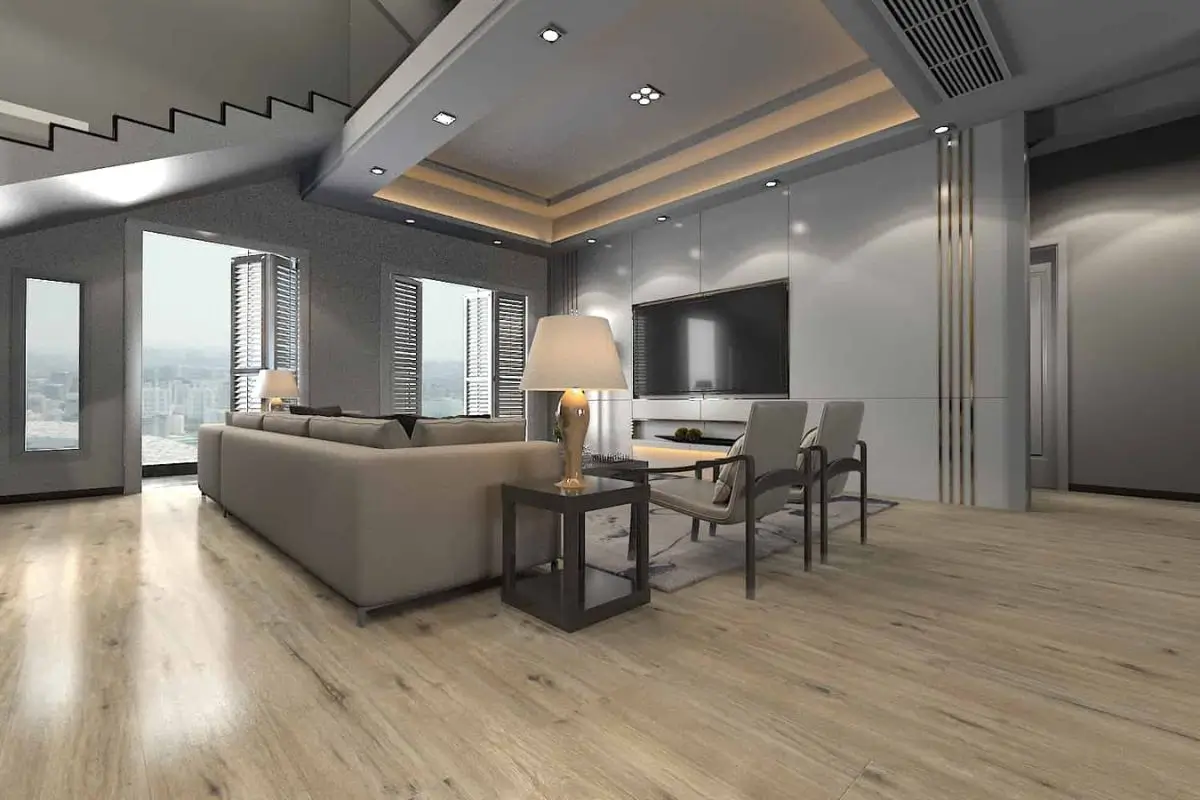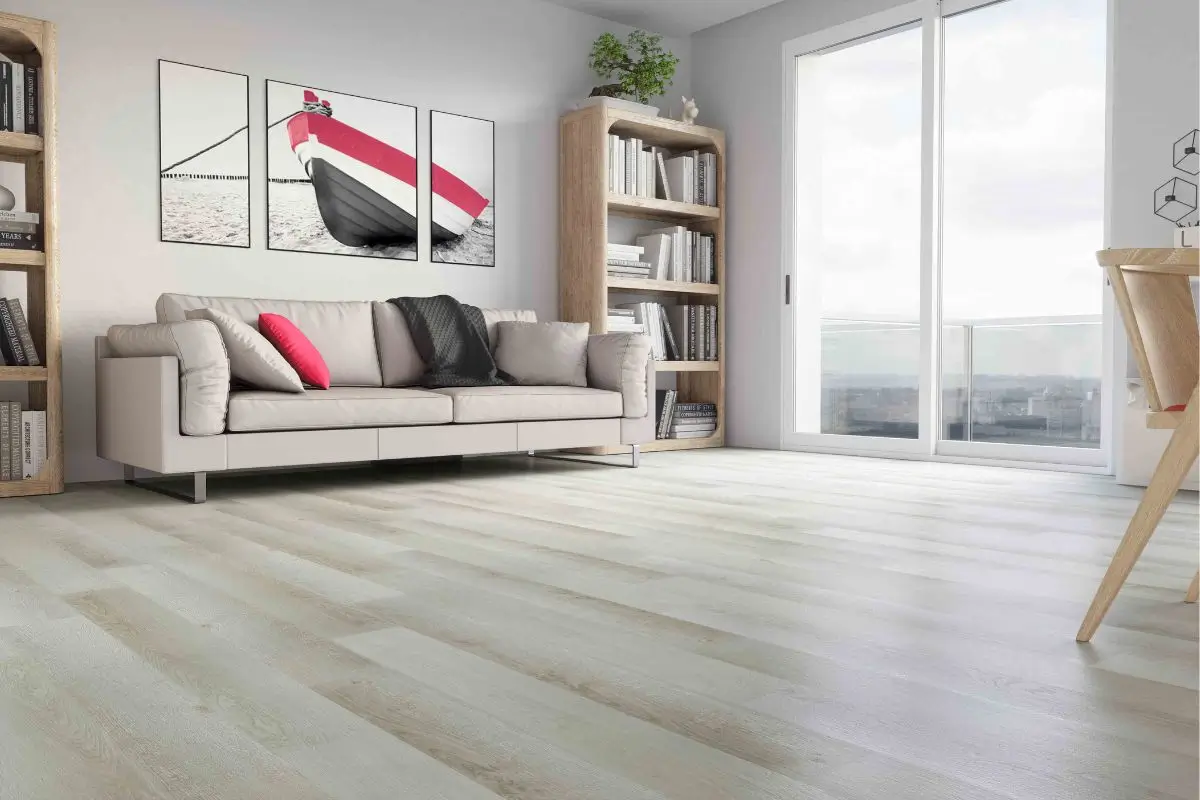
SPC Flooring and Heavy Furniture: Key Insights for a Durable Choice
SPC (Stone Plastic Composite) flooring is rapidly gaining popularity due to its durability, affordability, and versatility. A common concern when choosing flooring for homes or commercial spaces is whether it can handle heavy furniture without getting damaged. In this blog, we explore how SPC flooring stands up to the pressure of heavy furniture, looking at its material composition, resistance to dents, and ways to protect it from damage.
Unmatched Strength: How SPC Flooring Handles Heavy Furniture
SPC flooring is made from a combination of stone powder, polyvinyl chloride (PVC), and other stabilizers, creating a high-density core. This structure provides excellent strength and durability. Unlike traditional vinyl, SPC’s rigid core allows it to handle the weight of heavy furniture without warping or bending. Its robust construction helps resist the impact of furniture legs and heavy foot traffic, making it an ideal flooring solution for homes or offices with substantial furniture. The rigid core also ensures that SPC floors maintain their shape and integrity even when subjected to prolonged pressure, making it a long-term solution for spaces with heavy furniture.
Load-Bearing Capacity: Can SPC Flooring Handle the Weight?
SPC flooring is designed to withstand considerable pressure, making it suitable for spaces with heavy furniture. The flooring’s core is solid and durable, allowing it to endure the weight of large furniture pieces, including wardrobes, sofas, and dining tables. While it can handle a variety of loads, it’s important to note that concentrated pressure, such as from narrow furniture legs, can create indentations over time. However, with proper care, SPC flooring holds up well under heavy weight compared to softer flooring materials like laminate. Its load-bearing capacity makes it an ideal choice for homes, offices, and commercial spaces where heavy furnishings are common.
Scratch and Dent Resistance: A Flooring That Stays Pristine
One of the key benefits of SPC flooring is its scratch and dent resistance. The surface of SPC floors features a protective wear layer that is designed to resist damage from heavy furniture. Even when large furniture is moved around, the wear layer protects the surface from scratches, preventing the flooring from becoming unsightly. Unlike hardwood or laminate flooring, which can easily be scratched or dented by heavy items, SPC floors are designed to maintain their appearance and integrity. However, prolonged pressure from heavy objects placed in the same spot for an extended period can still cause minor indentation, which can be mitigated by using furniture pads or casters.
Furniture Legs and Casters: Protecting Your SPC Floor from Pressure
Furniture legs can exert concentrated pressure on SPC flooring, potentially leading to dents or surface damage. Thin or narrow furniture legs can cause more noticeable indentations compared to broader ones. To mitigate this, it is recommended to use protective furniture pads or rubber casters to distribute the weight more evenly across the surface. Casters, in particular, are useful for reducing direct pressure and allowing furniture to move smoothly without damaging the floor. If heavy furniture with sharp or narrow legs must be placed directly on SPC flooring, using felt pads or rugs underneath can prevent permanent indentations and maintain the floor’s durability over time.
Proper Installation: The Key to Maximum Durability
Proper installation of SPC flooring is critical to ensuring its long-term durability, especially in spaces with heavy furniture. A well-prepared subfloor provides a stable base for the flooring, reducing the likelihood of deformation under heavy loads. The click-lock installation system often found in SPC floors offers an easy-to-install solution that helps maintain structural integrity by ensuring each plank is securely in place. Improper installation, however, can create gaps or weak spots that might buckle under pressure. For best results, ensure that the subfloor is level, clean, and dry before installation. Professional installation can ensure that SPC flooring will hold up well even when subjected to heavy furniture.
Moisture Resistance: SPC Flooring That Thrives in Any Environment
SPC flooring is known for its excellent moisture resistance, making it a popular choice for areas prone to spills, such as kitchens, bathrooms, and basements. This property also adds to its durability under heavy furniture, especially in environments where moisture can cause other types of flooring to warp or degrade. Unlike traditional hardwood or laminate flooring, SPC is waterproof, so even if spills or moisture occur under furniture, the flooring will not absorb water or become damaged. This is particularly useful in spaces with heavy furniture that may be difficult to move regularly. The ability to handle both moisture and heavy weight makes SPC flooring a reliable option for long-term durability.
Low Maintenance, High Longevity: Keeping Your SPC Flooring in Top Condition
Maintaining SPC flooring is relatively easy, contributing to its long-lasting performance in spaces with heavy furniture. Routine cleaning, such as sweeping or mopping, helps keep the surface free from debris that could cause scratches. To preserve its appearance and durability, it’s important to avoid dragging heavy furniture across the floor. Additionally, placing furniture pads under heavy items can protect the surface from scratches and dents. SPC flooring, when properly cared for, can last for 10 to 20 years, making it a smart investment. With its resistance to wear, moisture, and heavy loads, SPC flooring continues to perform well even in high-traffic areas with substantial furniture.
Real-World Examples: How SPC Flooring Stands the Test of Time
Several real-world examples demonstrate how well SPC flooring holds up under heavy furniture. In a commercial office space in Dubai, SPC flooring was installed in a reception area with large desks and heavy chairs. Despite high foot traffic and the weight of the furniture, the flooring maintained its appearance without significant damage. In another example, a high-end restaurant in Abu Dhabi installed SPC flooring in the dining area, where heavy tables and chairs were frequently moved. The result was a durable, scratch-free floor that maintained its aesthetic appeal over time, showcasing how SPC flooring is well-suited for environments with heavy furniture.
Expert Tips: Maximize SPC Flooring’s Lifespan with These Simple Steps
To ensure that SPC flooring remains durable under heavy furniture, experts recommend a few best practices. First, use furniture pads or felt protectors on furniture legs to evenly distribute weight and avoid pressure points. For movable furniture, casters or rubber wheels are ideal for minimizing wear on the flooring. Additionally, avoid dragging heavy furniture across the floor; instead, lift it when moving. Regularly check for signs of wear, particularly in areas where furniture is placed for extended periods. By following these simple tips, SPC flooring can withstand the demands of heavy furniture while maintaining its quality and appearance for years.
Conclusion
SPC flooring is a durable and reliable choice for spaces with heavy furniture. Its robust material composition, scratch and dent resistance, and moisture-proof properties make it well-suited for environments where heavy loads are common. With proper care, installation, and the use of protective pads or casters, SPC flooring can endure the weight of furniture without compromising its longevity or appearance. Whether in residential or commercial settings, SPC flooring offers both practicality and style, making it a top choice for heavy furniture applications.





0 comments